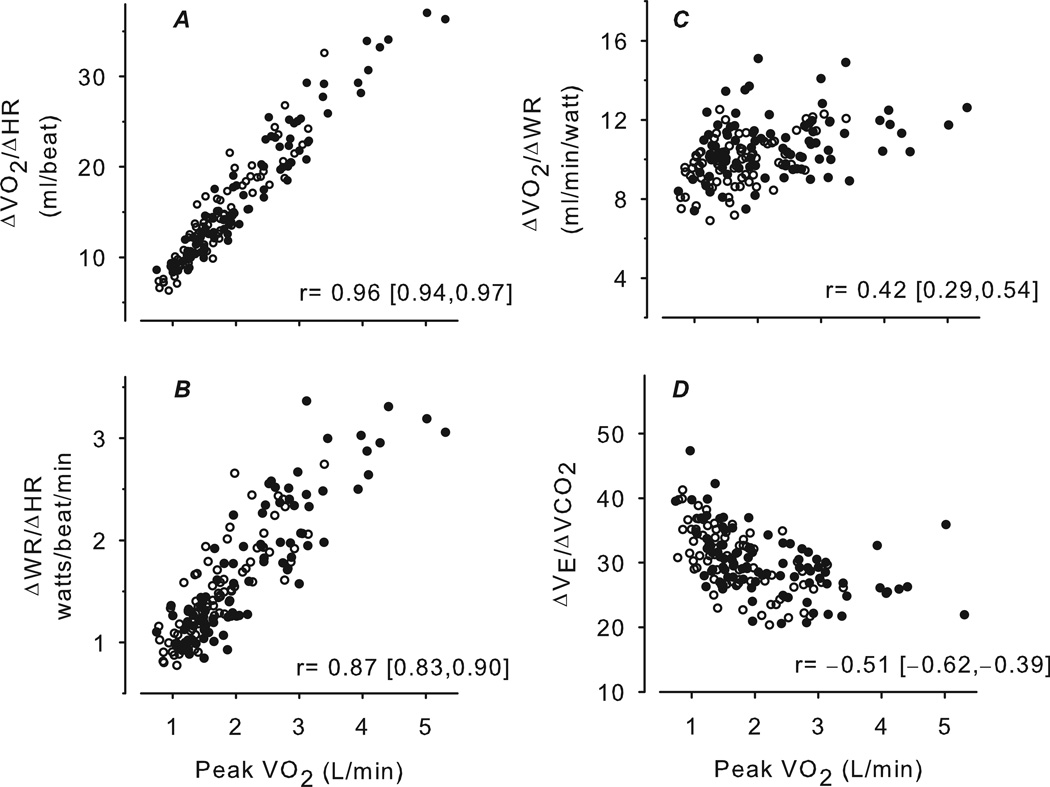Figure 2.
Scatter plots of CPET variables predicted to be relatively body size-dependent (A, B) and body size-independent (C, D) versus peak . Females are shown as open circles, males as closed circles. The correlation and corresponding 95% CI are shown for each plot. The body size-dependent CPET variables, and ΔWR/ΔHR, were highly correlated with peak . Since these variables do not require achievement of a maximal or near maximal effort, they may be useful as surrogates for peak (or ) for subjects who are unable to achieve an acceptable peak or maximal . In contrast, the body size-independent variables, and , were mildly correlated with peak . The value of these slopes is not as a surrogate for peak , but rather a useful additional biomarker for abnormal respiratory or cardiovascular function that may only be detected with exercise.

